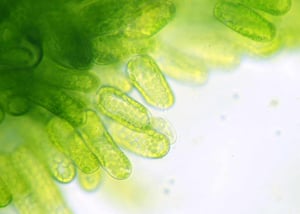For some time bioengineers all over the world have been trying to find a way to deliver drugs to desired points inside our bodies, and to these points only (without damaging surrounding tissue) – areas which perhaps are also difficult to reach. Up to now researchers had been trying to use different kinds of modified and attenuated bacteria as “couriers” (especially against tumors), with somewhat unsatisfactory results, for various reasons. Now the Max Planck Institute for Intelligent Systems of Stuttgart (Germany) has come up with a possible highly-innovative solution, based on a biocompatible and non-toxic microalga. The article, published in the journal Advanced Material, explains how microspheres (diameter: one micron, i.e. one thousandth of a millimeter) made of molecules sensitive to magnetic fields, and capable of carrying small quantities of drugs, were literally hooked onto the unicellular microalga Chlamydomonas reinhardtii. By switching on a magnetic field using a special device, researchers were then able to move the microspheres (and the associated unicellular algae) to the desired point.
For laboratory tests, the algae-based “micro-submarines” were loaded with different drugs and then added to different biological fluids (plasma, blood, etc.) and various types of cells, and they passed the test. The microalgae, in fact, showed that they were able to “swim” under a variety of conditions and to move without their structure being altered. Furthermore, they were also able to release the drug at the points established by the researchers.
New studies will be conducted in the near future by the researchers at the Max Planck Institute in order to “test” the microalgae on laboratory animals and then, if everything goes well, also on humans: the goal, of course, is to check whether these “couriers” of drugs trigger adverse reactions in the immune system.
Other fields are also showing great interest in the Chlamydomonas reinhardtii microalga: it is being studied by different international laboratories, for example, because it appears capable of directly producing a protein that could be used in pharmaceuticals. Other similar algae, on the other hand, appear promising for the production of molecules useful for human and animal nutrition, like several types of polyunsaturated fatty acids.

